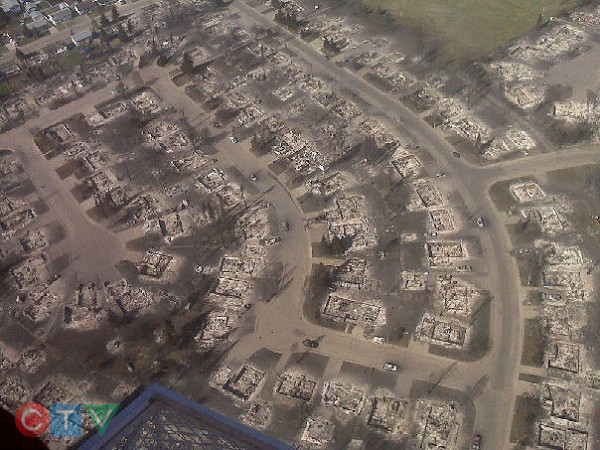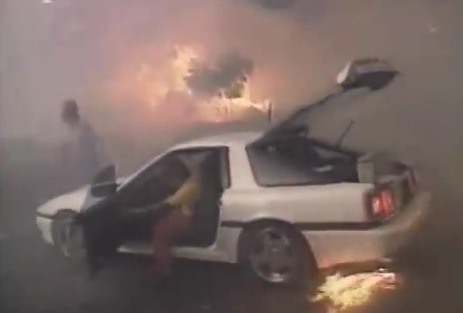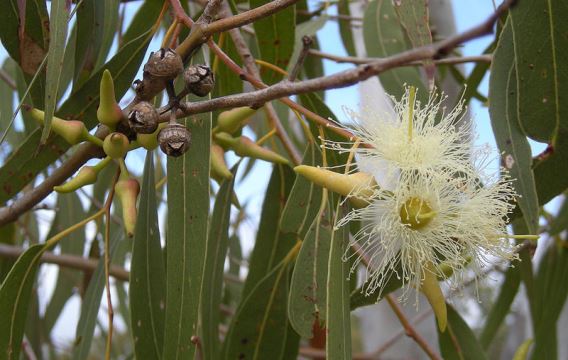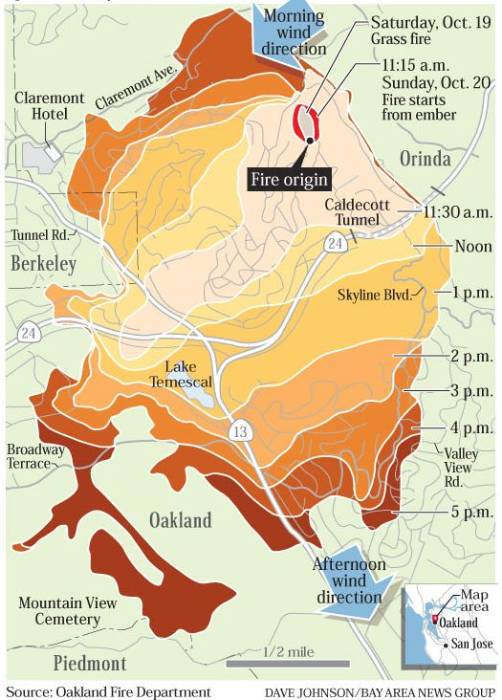
Researchers have found that building codes based on lessons learned during the deadly 1991 Tunnel Fire in the Oakland Hills of California can reduce the vulnerability of homes to wildfires.
In a paper titled Mandatory vs. voluntary adaptation to natural disasters: the case of U.S. Wildfires, authors Patrick W. Baylis and Judson Boomhower describe how they scoured property and wildfire records to identify which homes were constructed under building codes requiring enhanced resistance to wildfires.
Chapter 7A of the California Building Code which went into effect in 2008 requires certain fire resistance measures, including exterior construction materials used for roof coverings, vents, exterior walls, and decks. It applies to new construction of residential and commercial buildings in designated fire hazard severity zones.
The researchers discovered that a 2008 or newer home is about 16 percentage points (40%) less likely to be destroyed than a 1990 home experiencing an identical wildfire exposure. There is strong evidence, they concluded, that these effects are due to state and local building code changes – first after the deadly 1991 Oakland Firestorm, and again with the strengthening of wildfire codes in 2008. The observed vintage effects are highly nonlinear, appearing immediately for homes built after building code changes. There are no similar effects in areas of California not subject to these codes or in other states that lack wildfire codes.
Their findings are similar to those in a paper published October 4, 2021 in which researchers analyzed the structures that were destroyed and those that survived the Camp Fire that ran through the city of Paradise, California in 2018. They considered at least four primary characteristics of structures:
- Were they built before or after the adoption in 2008 of Chapter 7A of the California Building Code.
- Distance to nearest destroyed structure.
- Number of structures destroyed within 100 meters.
- Pre-fire overstory tree canopy within 100 meters
They found that the last three criteria were the strongest predictors of survival. Homes more than 18 meters (59 feet) from a destroyed structure and with less than 53 percent pre-fire overstory canopy within 30 to 100 meters (98 to 328 feet) survived at a substantially higher rate than homes in closer proximity to a destroyed structure or in areas with higher pre-fire overstory canopy. Most fire damage to surviving homes appeared to result from radiant heat from nearby burning structures or flame impingement from the ignition of near-home combustible materials. The researchers concluded that building and vegetation modifications are possible that would substantially improve outcomes. Among those include improvements to windows and siding in closest proximity to neighboring structures, treatment of wildland fuels, and eliminating near-home combustibles, especially within 1.5 meters of the structure.
(The video below was shot December 31, 2021, the day after the Marshall Fire destroyed more than 1,000 homes in Boulder County, Colorado. Notice that most of the surviving homes seen in the video had fewer homes in close proximity.)
The authors noted that while Chapter 7a includes requirements not found in many building codes, a few other codes are more complete incorporating multiple construction classes based on anticipated radiant heat, flame, and ember exposure levels. For example Chapter 7A does not consider the interaction between components such as siding, window, and the under-eave area on an exterior wall.
California is embarking on a pilot project in which owners of vulnerable homes in lower income neighborhoods will be given grants up to $40,000 to retrofit the structures, making them more resistant to wildfires.
Home Ignition Zone
This data helps to illustrate that the condition and characteristics of the Home Ignition Zone should be an extremely high priority in preventing structures from burning as a wildfire approaches.
There is an opportunity for much needed improvement in both current building codes and how we live in wildfire prone WUI areas.
Thanks and a tip of the hat go out to Gerald.



